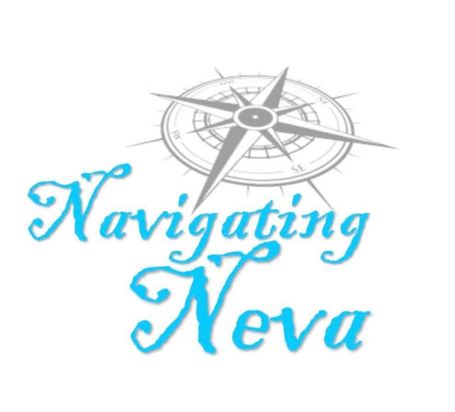
Supervise - Use Barriers - Learn to Swim - How to Respond
“Navigating Neva”! Neva Nicole here! Today's episode is: Episode 1.
I am going to share with you what is near and dear to me and what I constantly think about as Summer approaches.
That is, how to have no drowning. I want a zero drowning summer. I want you to be safe. I want each child to be safe.
I am an aquatic professional with 20 plus years of experience in my industry. Check out my Bio.
But, I’ve also had a near-drowning experience myself, as well of having to jump into the pool and save my own son.
All of these stories will be shared in upcoming episodes -- I want you to stay safe and enjoy the summer. Listen up and have a happy and healthy summer. Always remember, your safety comes first.
If you do a quick search for Drowning Prevention, you'll come across layers of Protection. That's going to be our focus for today.
Rule One is: Never leave a child unattended when you are near water. Water covers 71% of the earth. Just keep walking and you'll stumble across: a ditch, a creek, a river, a pond. Walk even further, and you'll reach: a shoreline, a beach, or you don't have to leave your own land.
You might find storm water or rain water, pooling in your yard. Maybe, there's a bucket that's filled with water; walk into your own house and you'll find a toilet, or a tub where you didn't pull the drain.
It takes less than two inches of water to drown. Drowning can occur in less than 60 seconds. Drowning is silent.
So, Rule 1: Always, watch your children near water.
On a dock, yes. In a boat, yes. If they can swim, yes. In a backyard where there's a body of water, yes.
What if you're in a backyard but you aren't planning on swimming?
Especially, if you aren't planning on swimming, in a later episode when I share my non-fatal drowning experience, I was not planning on swimming on that day.
Next is, Supervision.
The YMCA of the USA has a water watchers pledge.
Check this out. But, my favorite is Pool Safely's Water Watcher’s pledge. If you have this lanyard or key tag that comes on a bracelet that designates the water watcher. If for some reason, you, the water watcher; have to go, get the door, check on the food, run inside, untangle the dogs; you pass that bracelet or keychain onto the next responsible person. Pretty simple, but when this is not an assigned role and someone walks away because you didn't pass the torch, accidents can happen, then you're suffering a tragedy and playing the blame game on. “I thought she was watching or I thought he was watching”. So to avoid this very unfortunate event, we just have clear rules and have a designated water watcher. And if for any reason, that person has to give up this role, you pass the role along.
No assuming, no ‘because I thought he was watching’ or ‘he thought you were watching’. Let's avoid these uncomfortable and misfortunes by having a set plan and knowing who is watching when. Don't assume.
Our next tip is: Never swim alone. You may have heard of it as ‘No solo bathing’ or maybe you heard of no solo bathing and you didn't know what that meant. Well, we don't want you to swim alone. This is usually rule number one.
This is also your first assignment. When you go to the pool and you see the pool rules, take a picture and circle rule one. This is my first task for you. See a pool, find the rules, take a picture, circle rule one. So, is it ‘No unattended bathers’? Is it ‘No solo bathing’? Whether you're an adult or a child, do not swim alone. No solo bathing, even adults can drown. Always have a buddy and always have a Partner.
Do you think you are exempt from this rule because you're an adult who knows how to swim? You're not. Anyone can get into trouble in the water.
This is your next assignment. Tell me about an incident where an adult or a person got into trouble. Adults do drown.
Where I live, we had a doctor who was swimming laps in the ocean, in open water and he drowned. We had a navy seal practicing at our local pool and he drowned.
Always have a buddy.
If you have stories from your area, share them with me: share them with me on my Instagram page or email me directly.
Next in the layers of protection is, Fences -- pool covers and alarms.
Once I remember walking the block in the neighborhood I lived in, and there was a vacant house. This house had a pool in the back it was green, not empty, had a fence, and not closed; so anyone wandering could fall into the water. So, if this was a toddler or a child or a teen they could easily end up in this backyard-- by the pool full of water.
I'm not saying kids or teens would happily hop in a green pool and go swimming, but if they're bored and play ‘truth or dare’, they could just end up in that water or maybe there is no ‘truth or dare’ maybe, they just fell in.
Either way, I would hate for someone to fall into this pool, and it be a while before they’re found. So, easy rules. If you have a pool, put up a fence. If you have a pool, and it isn't swim season; cover it.
If you have a pool, and you do have a fence, but you have little ones that live next door or across the street or maybe they just come and visit, you may want to get a pool alarm. They make these little alarms where you can put them on the child's wrist, and if the child enters the water; the alarm sounds.
Some states have really good rules in place. Does your state have any good rules in place? Share them with me-- send me an email about your state rules and we'll talk about them in upcoming episodes.
Back to our fences. If you have a fence, you want to make sure it's at a certain height -- like a height that the child can't easily get over. Make sure if you have a fence, it locks. Make sure the lock is high enough that a child can't unlock it.
Pool covers. Back when I was little, our pool had a pool cover. It was a nice piece of plastic, cut out in the shape of the pool. It just floated on top of the pool. If I could lift it up and see under,pretty nice.
Anyway, nowadays they're nothing like that. Now, we have covers that you can walk across or an elephant can stand on. Obviously, have this installed correctly or by a professional and it is a good barrier.
Back to these alarms. Again, do a simple search and you'll find lots of alarms. One of my favorites is ‘Safe Sea Turtles’. I'll put the link below. ‘Safe sea turtle’ is one of those alarms where your child wears it. It's a strap that you strap to their wrist and if they fall in or get wet, the alarm sounds. Then you know they have entered the water. I’m also fond of pull alarms that detect movement.
If something falls into the pool: in the professional setting we have a thing called ‘Poseidon's eye’. It detects drowning. Well, it detects if a person has not had movement for a set period of time. So if you have a deep pool-- like a diving well or just a pool with depth, and a person goes down and they're lifeless, not moving after so many seconds, the alarm will beep to inform you that someone has submerged and is not going anywhere.
Next, on our layers of protection is: learning to swim.
And, this is a good one. If you've ever noticed the American Red Cross does not have swim instructors-- they have water safety instructors. This role is to educate participants, teach them how to swim, how to react and respond in certain situations and of course, this is age and level based.
You don't get all the information in lesson one. This does not drown proof anyone. Drownings can still occur. So, we still need to keep our layers of protection in place; never swim alone; never leave a child unattended and regardless of how good of a swimmer they are.
My son had two water incidences after taking swimming lessons. Swimming is one of my favorite things to teach. But, even I, had a hard time finding the best instructor for my son.
In a later episode, we're going to discuss, how to pick a swim instructor. You can also teach yourself how to swim, as I did. I will also talk about this more in our later episodes.
Lastly, knowing how to respond. And you guessed it. Learn CPR. Not only CPR but get training in basic water rescue.
Remember, your safety comes first. We never want to put ourselves in a situation that can take our own life. We want to help others, but stay safe while doing so. In swimming lessons, you learn things like: Reach or throw, but don't go; and basic water rescue a non-swimmer can learn how to keep themselves safe while helping someone else in the water.
Part of knowing how to respond, is to have a safety plan or an emergency action plan. Keep a phone nearby. I'm going to tell you guys more about emergency action plans in lesson five.
Safety plans just give outlined items. So, in an incident everyone is aware of who is responsible for what and CPR training saves lives.
I do know that the CPR survival rate for out-of-hospital settings is low. Can you guess it? I'll give you a second. What did you guess?
I'm going to tell you. It's 16%. That's low, I know.
However, so far I have not personally met a person who has performed CPR on a drowning victim and they did not make a full recovery. I know it does happen. I’ve heard of stories that have happened.
I had an ER nurse tell me once of a baby who came into the ER and had been found under the water in the bathtub. So what I’m saying is; in my own experience, when I teach classes and when I meet people, everybody that I’ve met, they perform CPR and it was successful.
So, for my professional background, the statistics are very high.
In episode 4, I’m going to explain why CPR is so important, and its effects on the grounding process.
So, for right now, let's review our layers of protection: first is, to supervise; then there's barriers, learn to swim and how to respond.
Did you remember all those? Supervise. Make sure your child's never alone when they're near a body of water or swimming. No solo bathing-- always have a buddy with you. Our barriers, our fences, our alarms, our pool covers and learn to swim; and how to respond.
Remember, I did give you guys some homework, and you can find these assignments in my show notes. I’m also open to emails, if you want to email me directly.
Let's review the assignments from today's episode. Snap a Pic of the pool rules--so when you see a pool, find their pool rules, snap a picture and circle rule one and then share it with me to my Instagram page: NavigatingNeva.
Second assignment is: what rules does your state or county have for pools or bodies of water. For example, where I live, if you're a foster parent you have to have CPT training, if there's a water or pool on your property. What does your state have?
Third is, to share your town's surroundings.
Are there any drowning stories from your town? Is there an area where people get in trouble every summer when it's time to swim again?
Thanks for listening to our first episode.
Remember! No drowning. I want a zero drowning summer, I want you to be safe, I want each child to be safe. Come back next week for water safety precautions and water safety tips.
Until then, have a happy and safe summer. And always remember, your safety comes first.
This is Navigating Neva. See you next week.
Things mentioned:
https://www.poolsafely.gov/pledge/
https://www.safekids.org/other-resource/water-watcher-card
https://ymcanyc.org/programs/swimming-ymca/water-watcher
The American Red Cross
Drowning Prevention and drowning survival https://www.redcross.org/get-help/how-to-prepare-for-emergencies/types-of-emergencies/water-safety.html
Learn CPR
Hands Only CPR https://www.youtube.com/watch?v=-Yqk5cHXsko
Take a class and get certified in CPR- best CPR for drowning victims it includes breaths.
https://cpr.heart.org/en/courses/family-and-friends-cpr
If in my area, I teach CPR. mailto:brunswickcprlady@gmail.com
Pool Fences and Alarms with their name and price listing https://www.safewise.com/blog/gadgets-will-keep-swimming-pool-safe/
Get your own Water Watcher card mailed to you internal://6a96305b-d4f8-4dff-8fd1-31d051e69389
© Copyright. All rights reserved.

